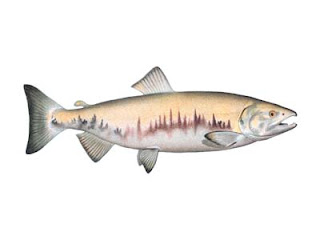 |
| spring largemouth bass |
In parts of North America, bass adapt their feeding patterns in spring, as forage species become available. In some habitats, fish species migrate into spring habitats almost overnight, causing bass to follow.
In spawning areas, bass may eat the spawning species, or feed on minnows or other fish that arrive to feast on fish eggs. Bass in these areas are in ambush mode, and will attack small spinnerbaits, jigs, soft plastics, or other lures that imitate minnows and other small fish.
Bass can act strangely during the spring. For example, bass are sometimes seen very close to the water's edge, preying on sunfish, crayfish and other species that hide among shoreline vegetation, tree branches or other obstructions. These fish can be targeted with senko type worms, top water plugs or other shallow water lures.
In shallow areas bordered by drop offs, lily pads (spadderdock) begin to appear and bass quickly begin patrolling these areas. As lily pad beds expand, micro-communities thrive. The lily pad community food chain begins tiny insects and invertebrates, followed by minnows, sunfish, perch, frogs and other forage species. As the season progresses these areas become important feeding areas for largemouth and other bass species.
Fishing these areas requires weedless lures which imitate natural inhabitants. Good choices for fishing around lily pads include senko worms, texas worm rigs, buzz baits, soft plastic frogs and weedless spoons.



